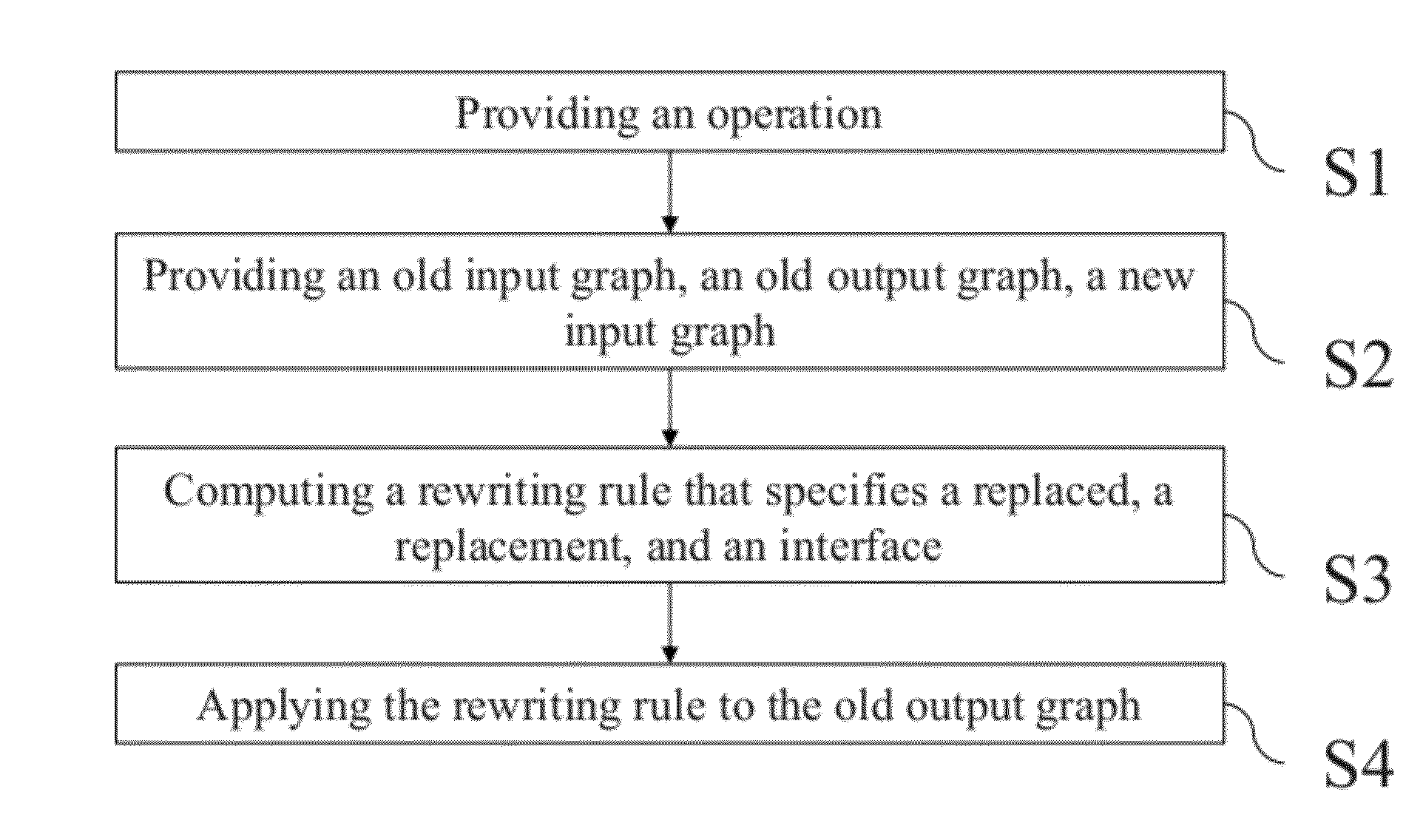Modeled object updating
a technology of modeled objects and objects, applied in the field of computer programs and systems, can solve the problems of inability to display complex parts, inability to balance the said history structure, and difficulty for users to display complex parts
- Summary
- Abstract
- Description
- Claims
- Application Information
AI Technical Summary
Benefits of technology
Problems solved by technology
Method used
Image
Examples
Embodiment Construction
[0064]With reference to the flowchart of FIG. 4, it is proposed a method for updating a modeled object. The method comprises providing (S1) an operation. The method also comprises providing (S2) an old input graph of the operation, an old output graph corresponding to an application of the operation to the old input graph, a new input graph of the operation. The method further comprises computing (S3) a rewriting rule that specifies a “replaced”. The “replaced” is a part of the old input graph to be replaced. The rewriting rule also specifies a “replacement”. The “replacement” is a part of the new input graph to replace the part of the old input graph. The rewriting rule further specifies an “interface”. The interface is a part common to the “replaced”, the “replacement” and the old output graph. The method then comprises applying (S4) the rewriting rule to the old output graph. Such a method improves the update of a modeled object.
[0065]A modeled object is an object modeled by data...
PUM
 Login to View More
Login to View More Abstract
Description
Claims
Application Information
 Login to View More
Login to View More - R&D
- Intellectual Property
- Life Sciences
- Materials
- Tech Scout
- Unparalleled Data Quality
- Higher Quality Content
- 60% Fewer Hallucinations
Browse by: Latest US Patents, China's latest patents, Technical Efficacy Thesaurus, Application Domain, Technology Topic, Popular Technical Reports.
© 2025 PatSnap. All rights reserved.Legal|Privacy policy|Modern Slavery Act Transparency Statement|Sitemap|About US| Contact US: help@patsnap.com



